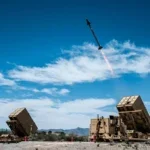
The Army plans to use its growing investment budget over the next two years to drive a new technology-informed approach to requirements and address modernization that’s left the service lagging behind near-peer competitors’ in future capabilities, a senior acquisition official said Wednesday.Lt. Gen. Paul Ostrowski, director of the Army Acquisition Corps, said the Army will maximize its increase in investment dollars from $26.8 billion in FY '17 to $28.9 billion in FY ‘18 and then $32 billion in FY ‘19…

 By
By 











